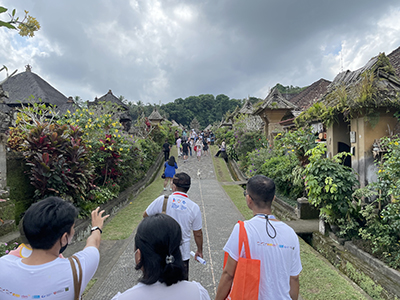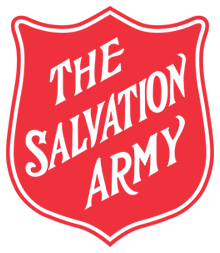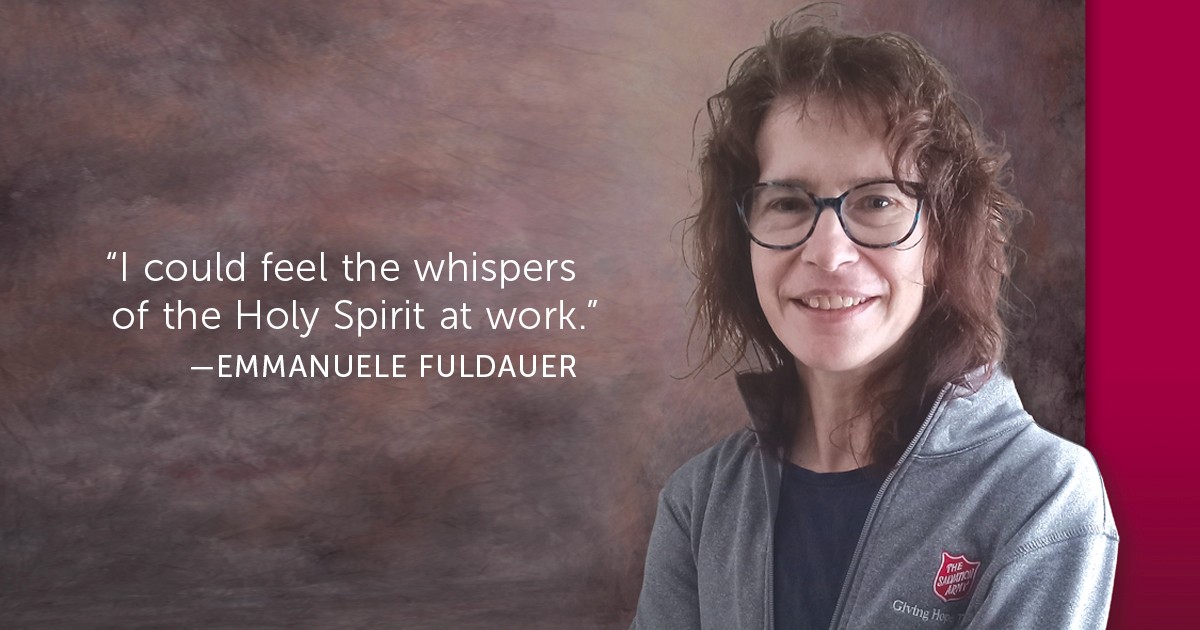(Above) Perron Goodyear attends the seventh session of the Global Platform for Disaster Risk Reduction in Bali, Indonesia
October 13 is the International Day for Disaster Risk Reduction, a day to promote a global culture of risk awareness and celebrate how people and communities around the world are reducing their exposure to disasters.
Public Safety Canada defines disasters as “a social phenomenon that results when a hazard intersects with a vulnerable community in a way that exceeds or overwhelms the community’s ability to cope.” Research has shown that the most vulnerable are disproportionally affected by hazards.
As an organization, The Salvation Army already plays an active role in disaster risk reduction both territorially and internationally, through programs such as housing and shelters, poverty reduction, food security, care for seniors, and addictions treatment and recovery, all of which increase resilience and decrease vulnerability.
In May, I had the opportunity to share the work of The Salvation Army’s emergency disaster services (EDS) with colleagues from around the globe as part of the Canadian delegation to the seventh Global Platform for Disaster Risk Reduction (GPDRR) in Bali, Indonesia.
From Risk to Resilience

Canada is a signatory to the Sendai Framework for Disaster Risk Reduction 2015-2030, which was endorsed by the United Nations General Assembly in 2015.
At GPDRR, member states reported on their progress and assessed the implementation of the framework. Notably, this year’s event took place at a critical time: seven years from the adoption of the Sendai Framework and just over two years since the start of the COVID-19 pandemic.
This global crisis has exposed how underlying vulnerabilities and inequities have catastrophic consequences for the most vulnerable across the world. Prevention and the risk-reduction agenda are essential if we are to achieve a sustainable future for all.
Under the theme “From Risk to Resilience,” GPDRR included sessions on diversity, multisectoral approaches, recovery in urban contexts, co-operation across borders and empowering the most at risk. It also provided stakeholders the opportunity to engage in moderated discussion.
On the final day of the Global Platform, we participated in field trips to learn how Balinese people protect the environment and prevent disaster. I had the opportunity to visit the beautiful highland village of Penglipuran, which relies on local knowledge for risk reduction. They use the landscape to their advantage, maintaining 45 hectares of bamboo forest as a form of disaster prevention, particularly from flooding.

The village also has a unique housing architecture that is earthquake resistant. Bamboo is carved into an “emergency alert siren” for every house. The first person to become aware of an impending disaster uses this siren to inform neighbours, who each join in until the entire village knows there is something happening.
More Than a Conference
While the official program of the Global Platform was extremely valuable, the event also provided opportunities for informal discussions with the Canadian delegation, which was led by the Honourable William Blair, president of the Queen’s Privy Council for Canada and minister of emergency preparedness. The relationships forged strengthened partnerships at the federal level, including the Humanitarian Workforce Project (HWF) and Operation: Red Shield Readiness.
Operation: Red Shield Readiness aims to increase The Salvation Army’s capacity to support community risk reduction and emergency management response to all-hazard events, as well as address the specific needs of communities that face social, cultural and economic marginalization.
The Salvation Army is committed to taking action to prepare for future emergencies, including extreme weather events caused by climate change, focusing on proactive prevention and mitigation efforts, while ensuring robust response and recovery capabilities with our partners. We anticipate being prepared to continue to respond to all hazards, including but not limited to floods, fires, hurricanes, tornadoes, pandemics, technological incidents and earthquakes. We are also prepared to respond, as needed, to support Indigenous communities or an influx of refugees and asylum seekers.
Agents for Change

The Global Platform provided knowledge that will allow The Salvation Army to take an even more active role in disaster risk reduction and climate change adaptation, both domestically and internationally.
For example, the EDS department has developed and is implementing a strategy for ethical and environmentally conscious purchasing. Resources will include a prioritization matrix to assist with procurement and purchasing decision-making.
The strategy also includes an “Agents for Change” program, which aims to champion disaster risk reduction and climate change adaptation at the local, divisional and territorial levels. In partnership with the international development department, consideration is also being given to how to include disaster risk reduction in development projects funded by the Canada and Bermuda Territory.
2030 and Beyond
As part of the launch of the new International Positional Statement on Caring for the Environment, General Brian Peddle has made a personal call for Salvationists and friends to make adjustments in lifestyle and comforts, for example:
- Consider our use of heating and cooling—a 1.5 C change is a good start;
- Think twice about our ease of travel, choosing to walk or cycle where possible;
- Make intentional choices of sustainable products when shopping;
- Positively declare our part in stewardship of the earth;
- Move our thinking from competing for more to collaborating and sharing.
To meet Canada’s commitments to the Sendai Framework, the time for action is now. In the years ahead, The Salvation Army can be a leader in reducing disaster risks for the most vulnerable. To do this, it will take a commitment at all levels of the organization to care for the earth and all its inhabitants.
Perron Goodyear is the territorial director of emergency disaster services.










Leave a Comment